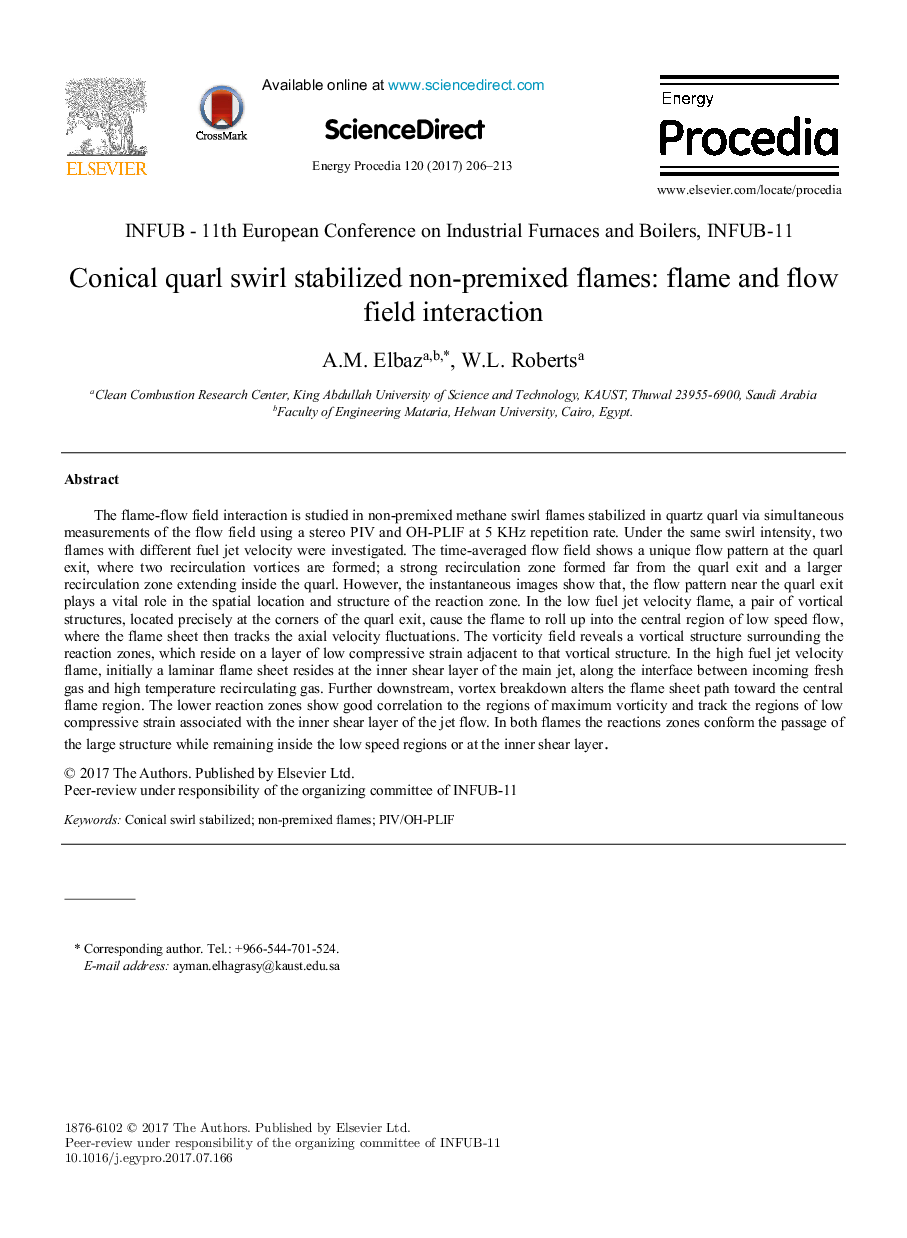| Article ID | Journal | Published Year | Pages | File Type |
|---|---|---|---|---|
| 5444994 | Energy Procedia | 2017 | 8 Pages |
Abstract
The flame-flow field interaction is studied in non-premixed methane swirl flames stabilized in quartz quarl via simultaneous measurements of the flow field using a stereo PIV and OH-PLIF at 5 KHz repetition rate. Under the same swirl intensity, two flames with different fuel jet velocity were investigated. The time-averaged flow field shows a unique flow pattern at the quarl exit, where two recirculation vortices are formed; a strong recirculation zone formed far from the quarl exit and a larger recirculation zone extending inside the quarl. However, the instantaneous images show that, the flow pattern near the quarl exit plays a vital role in the spatial location and structure of the reaction zone. In the low fuel jet velocity flame, a pair of vortical structures, located precisely at the corners of the quarl exit, cause the flame to roll up into the central region of low speed flow, where the flame sheet then tracks the axial velocity fluctuations. The vorticity field reveals a vortical structure surrounding the reaction zones, which reside on a layer of low compressive strain adjacent to that vortical structure. In the high fuel jet velocity flame, initially a laminar flame sheet resides at the inner shear layer of the main jet, along the interface between incoming fresh gas and high temperature recirculating gas. Further downstream, vortex breakdown alters the flame sheet path toward the central flame region. The lower reaction zones show good correlation to the regions of maximum vorticity and track the regions of low compressive strain associated with the inner shear layer of the jet flow. In both flames the reactions zones conform the passage of the large structure while remaining inside the low speed regions or at the inner shear layer.
Keywords
Related Topics
Physical Sciences and Engineering
Energy
Energy (General)
Authors
A.M. Elbaz, W.L. Roberts,
